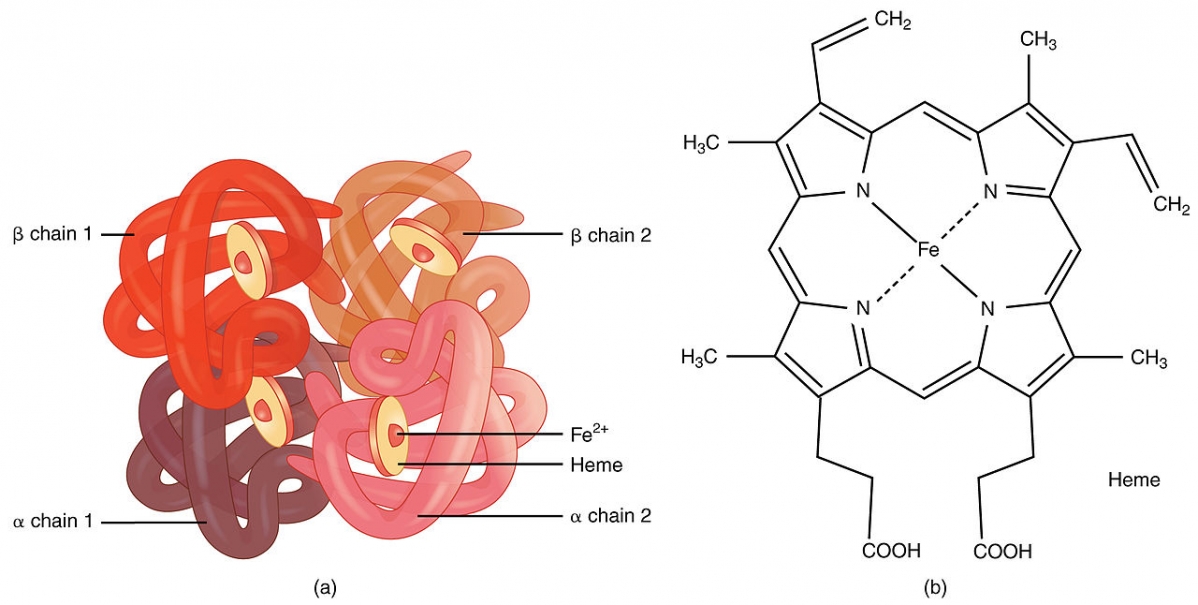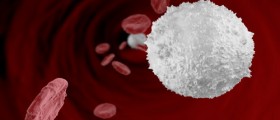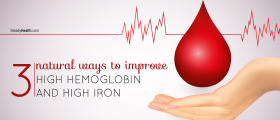Hemoglobin is the iron-containing oxygen-transport metalloprotein in the red blood cells. The main role of hemoglobin in the human body is to carry the oxygen from the lungs or gills to the rest of the body, and collect carbon dioxide to bring it back to the lungs. The iron contained in hemoglobin is responsible for the red color of blood. Another significant role of hemoglobin is to maintain the shape of the red blood cells. Abnormal hemoglobin structure may disrupt the shape of red blood cells and obstruct their function.

Normal hemoglobin values
Hemoglobin is usually measured as a part of complete blood count. The complete blood count is an integral part of overall health evaluation. The test is used to measure the severity of anemia or polycythemia, monitor the response to treatment, and help diagnose other health problems. Blood is normally drawn from a vein, usually from the inside of the elbow or the back of the hand, and collected into an airtight vial or tube attached to the needle. Automated machines designed to perform a number of different tests on blood do the measuring. The hemoglobin level is expressed as the amount of hemoglobin in grams (gm) per deciliter (dl) of whole blood. The normal ranges are:
Newborns: 17-22 gm/dl One (1) week of age: 15-20 gm/dl One (1) month of age: 11-15gm/dl Children: 11-13 gm/dl Adult males: 14-18 gm/dl Adult women: 12-16 gm/dl Men after middle age: 12.4-14.9 gm/dl Women after middle age: 11.7-13.8 gm/dlHigh hemoglobin levels
High hemoglobin count indicates an abnormal concentration of oxygen-carrying proteins in patient’s blood. This blood test result does not always mean that a patient also has a high red blood cell count. Different cells may have a different amount of hemoglobin proteins, and high hemoglobin count is often possible, even if the blood cell count falls within the normal range.
In most cases, high hemoglobin count is caused by exposure to high altitudes, smoking, dehydration or tumors. The most common cause of increased hemoglobin is dehydration, and with adequate fluid intake, the results return to normal. High hemoglobin levels can be seen in people living at high altitudes. At high altitudes the air is much thinner than at sea level. As a result, a person inhales fewer oxygen molecules with each breath. People living at the higher altitudes have adapted to the thin air by developing an ability to carry more oxygen in each red blood cell.
Lung diseases may also affect a hemoglobin count as the red blood cell production increases to compensate for the low blood oxygen levels. The results are also elevated if the kidneys release too much protein that enhances the red blood cell production, or if a patient has a bone marrow dysfunction that results in an increased production of red blood cells.
- www.nhs.uk/conditions/red-blood-count/
- medlineplus.gov/lab-tests/hemoglobin-a1c-hba1c-test/
- Photo courtesy of OpenStax College by Wikimedia Commons: commons.wikimedia.org/wiki/File:1904_Hemoglobin.jpg

















Your thoughts on this
Loading...